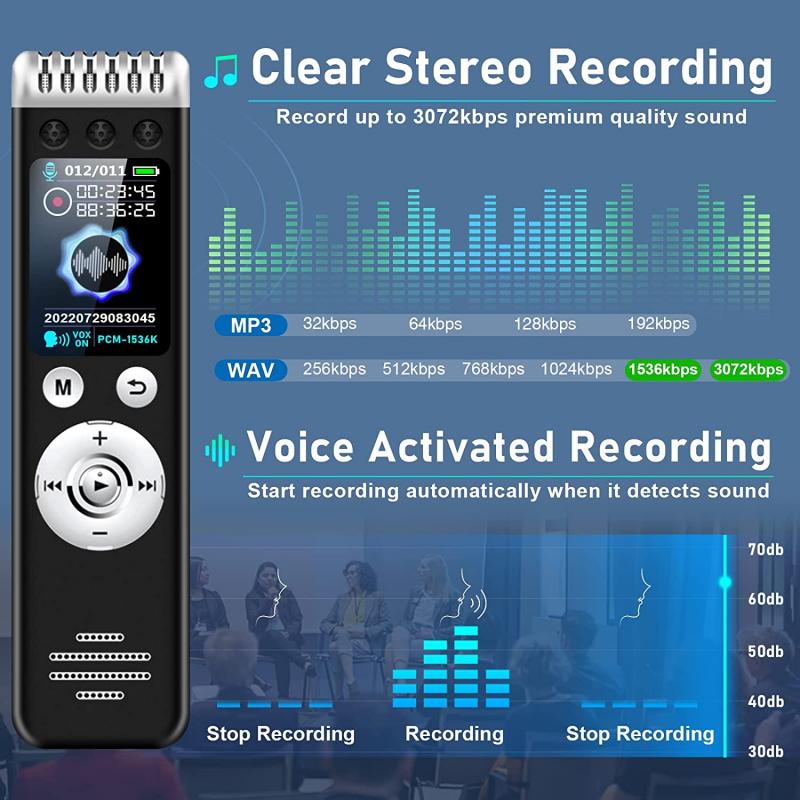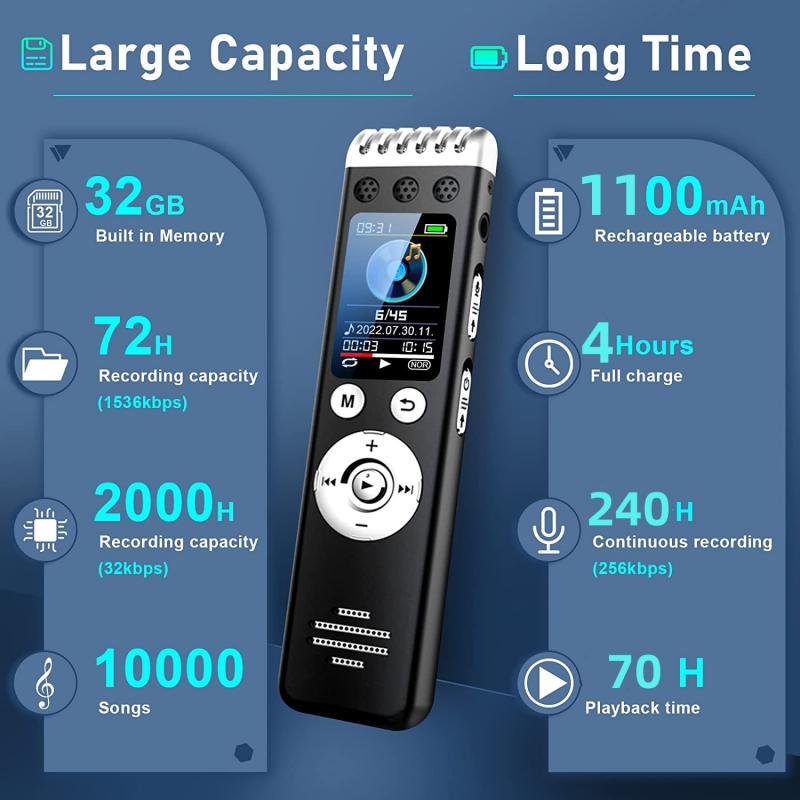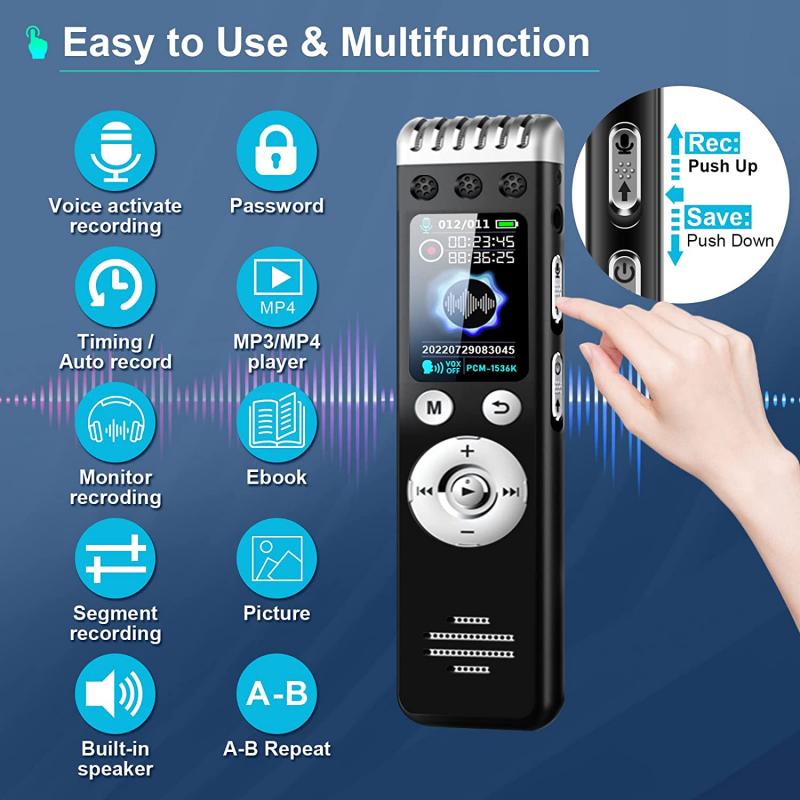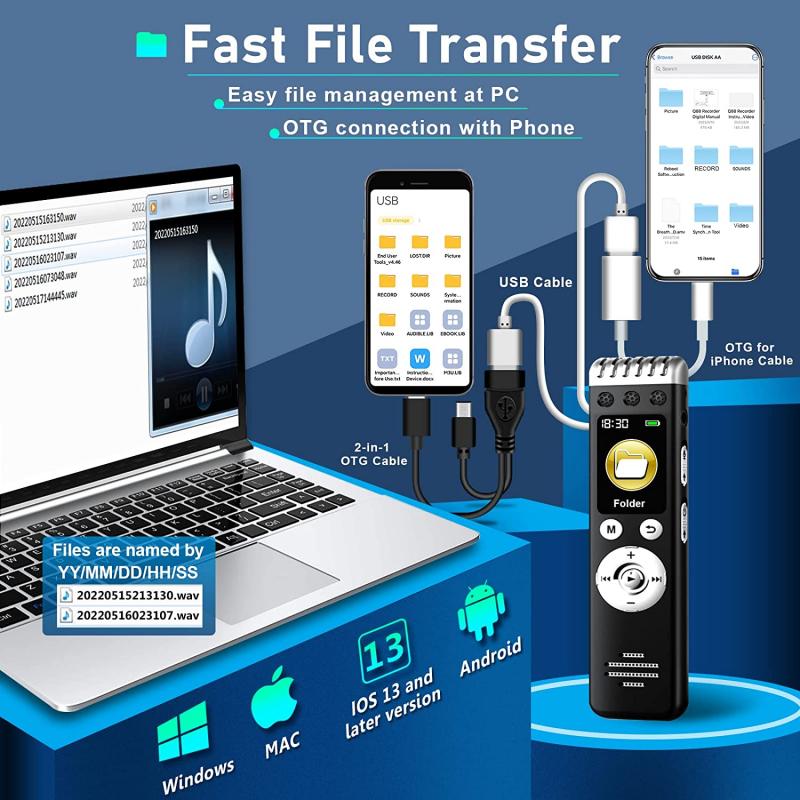How To Clean Up Voice Recording?
Voice recordings are a crucial part of various industries and personal activities, from professional podcasting and music production to academic lectures and personal notes. However, the effectiveness of a voice recording can be significantly compromised by background noise, distortion, and other audio interferences. Learning how to clean up voice recordings ensures that the message is conveyed clearly and professionally. This article provides a step-by-step guide on refining audio recordings using both software tools and practical techniques.
Understanding the Basics of Audio Cleaning

Audio cleaning involves a series of processes aimed at improving the quality of sound recordings. The primary goal is to eliminate unwanted noise, enhance clarity, and ensure that the intended audio remains undistorted. There are various aspects of a recording that may require attention:
1. Background Noise Reduction: External sounds such as wind, traffic, or electronic hums that can detract from the recording's clarity.
2. Echo and Reverberation Control: Excessive echo or reverberation can make a recording sound distant or unclear.
3. Normalization: Balancing the audio levels throughout the recording.
4. Equalization: Adjusting the balance between frequency components.
5. Compression: Reducing the dynamic range to ensure a consistent volume level throughout.
Tools Required for Audio Cleaning

Before diving into the process, it's important to have the right tools at your disposal. Various software options can help with different aspects of audio cleaning:
- Audacity: A free, open-source software that offers a comprehensive suite of audio editing tools.
- Adobe Audition: A professional-grade audio editing software that offers advanced features for detailed audio crafting.
- iZotope RX: Known for its precise audio repair tools, suitable for complex issues.
- GarageBand (for Mac users): Offers basic audio editing features for simple tasks.
These tools allow users to manipulate and clean up audio with various effects and processes.
Step-by-Step Process to Clean Up Voice Recordings

1. Initial Assessment

Start by listening to the entire recording attentively. Identify the sections with clear audio and problematic areas affected by noise, distortion, or other issues. Take note of patterns or specific instances of interference.
2. Noise Reduction
The first significant step in cleaning up a recording is reducing background noise, which can typically be achieved through noise reduction features available in most editing software:
- Audacity: Select a section of the recording that captures only the noise (such as the silence between words). Use the "Noise Reduction" tool to analyze this sample, then apply the noise reduction effect across the entire track.
- Adobe Audition: Offers a similar function with its "Noise Reduction (Process)" where you can capture a noise print and apply noise reduction.
It’s essential to apply these effects subtly to avoid removing frequencies that are part of the desired audio.
3. Equalization
Once background noise is reduced, use equalization (EQ) to balance the frequencies. EQ can help enhance clarity by:
- Boosting mid-range frequencies which often contain the bulk of vocal information.
- Cutting unnecessary low frequencies that contribute to rumble or hum.
- Modifying high frequencies if the voice sounds muffled.
Software like Adobe Audition offers graphic and parametric EQ controls that allow precise frequency adjustments.
4. Compression
Compression helps smooth out the audio levels throughout the recording, ensuring that the quieter parts are audible without causing the louder sections to clip:
- Set the threshold to limit the loudest parts.
- Adjust the ratio to determine how much compression to apply.
- Use the attack and release settings to balance the start and end of compression application.
Software like iZotope RX provides intuitive interfaces for setting these parameters effectively.
5. Echo and Reverb Reduction
Dealing with echo or excessive reverberation requires more complex processing.
- Use reverb reduction tools available in software like Adobe Audition or iZotope RX.
- Alternatively, apply a gate effect to help cut noise in the silent or quieter parts of the recording.
It’s crucial to use these features conservatively to avoid making the voice sound unnatural or clipped.
6. Normalization
The final step in the audio cleaning process is normalization. This standardizes the recording’s overall volume level, avoiding drastic shifts in loudness. Most audio editing software has a normalization feature that simplifies this process. Set the normalization level to around -3dB to -6dB for balanced output.
Practical Considerations and Tips
- Monitor Playback Devices: Use different playback devices (speakers, headphones) to identify any lingering issues in the cleaned audio.
- Non-Destructive Editing: Always work on a copy of the original recording to prevent accidental loss of data.
- Consistent Monitoring: Consistently check for over-processing which can lead to distortion or loss of audio quality.
- Invest in Quality Equipment: While software can do much to enhance audio, starting with a high-quality recording minimizes the need for extensive editing.
Advanced Techniques for Persistent Issues
When typical methods do not suffice, advanced techniques or specialized plugins might be necessary:
- DeClick and DeCrackle: For recordings with clicks or crackle, plugins designed to diminish these artifacts may be necessary.
- Multi-band Compression: Adjust different frequency bands separately to gain precise control over complex audio sources.
Cleaning up voice recordings is a meticulous process that requires attention to detail and a good ear for audio fidelity. From fundamental noise reduction to advanced techniques like compression and equalization, each step builds on precision and balance to achieve the clearest, most professional outcome. By leveraging sophisticated software tools and maintaining a careful approach, users can transform subpar recordings into top-quality audio with clarity and impact. Whether creating a podcast, music, or preserving a presentation, these techniques empower you to produce quality recordings capable of resonating with your intended audience effectively.
